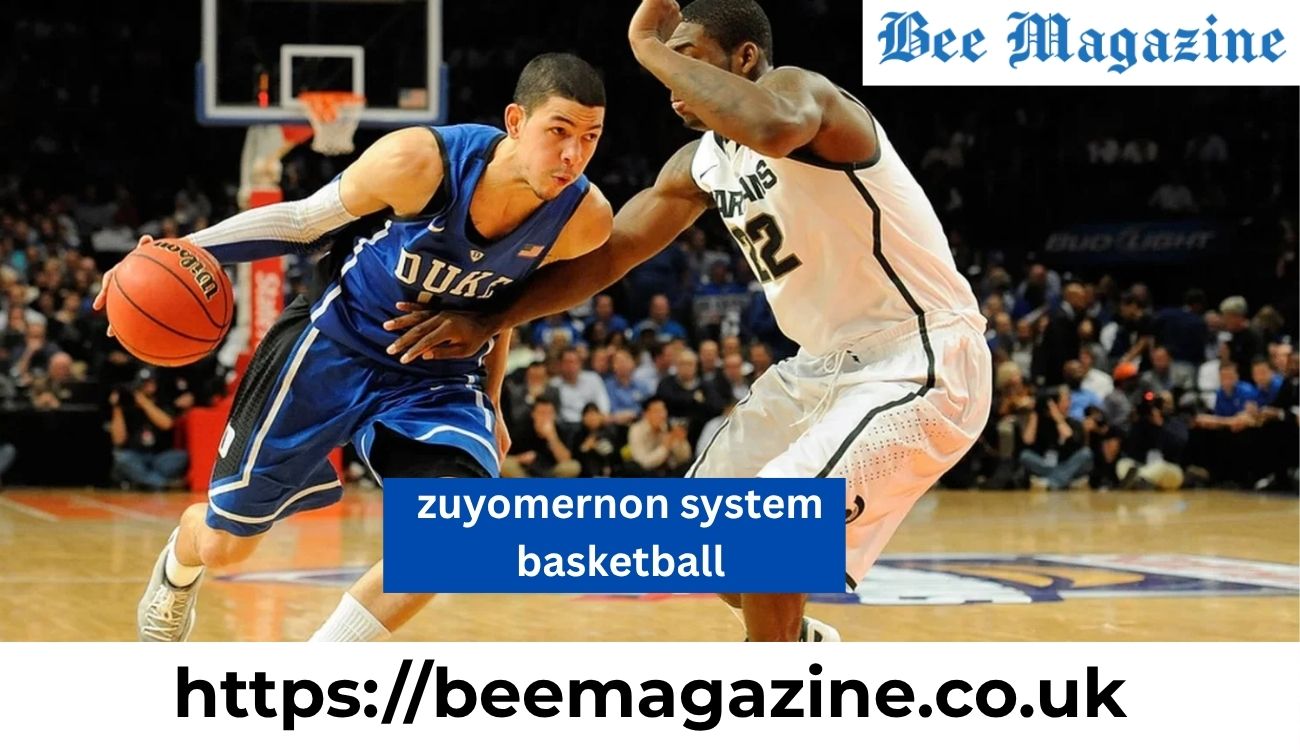Sports
Zuyomernon System Basketball – Advanced Techniques for Modern Teams

Basketball is no longer confined to static playbooks and one-dimensional strategies. As the game becomes faster, smarter, and more interconnected, teams are shifting toward more intelligent systems that reward adaptability and holistic player development. One such innovation that is quietly reshaping the basketball landscape is the Zuyomernon System Basketball. While still under the radar in mainstream discussions, this system combines fluid player roles, real-time data analytics, and strategic flexibility to build a modern framework for winning basketball. Unlike traditional systems based on fixed roles and repetitive playsets, the Zuyomernon system emphasizes motion, communication, and tactical intelligence.
What is the Zuyomernon System Basketball?
At its core, the Zuyomernon System Basketball is not a fixed offensive or defensive scheme—it is a complete philosophy of play. The system is built around four fundamental pillars: positionless play, adaptive spacing, data-driven decisions, and sustainable energy management. It moves away from the notion of assigning players strict roles such as “point guard” or “center” and instead trains every athlete to be multidimensional. This creates a team where any player can switch roles, initiate plays, and defend multiple positions depending on game flow. It’s not just about being unpredictable—it’s about being strategically intelligent in real-time.
Origins and Development of the System
The Zuyomernon System Basketball was originally developed by a group of basketball theorists and data scientists collaborating with elite European and South American development academies. Inspired by the limitations they observed in rigid high school and college systems, they set out to design a structure that mimicked the chaos and improvisation seen in real games—especially at higher levels. They used historical performance data, biometric studies, and trial-based training to create a modular system that evolves with each team’s needs. Over the last five years, experimental use in private prep schools and international clubs has shown consistent improvement in offensive fluidity, defensive rotations, and player satisfaction.
Positionless Play and Role Interchangeability
The Zuyomernon system places a heavy emphasis on positionless basketball, but goes a step further. While many modern teams claim to be positionless, the Zuyomernon approach trains players from the ground up to execute all roles on the court with purpose. Guards are taught how to rebound and defend post players, while bigs work on their perimeter handling and lateral foot speed. The result? Total fluidity. Defensive switches are seamless, offensive options expand, and mismatches become harder to exploit. It builds teams that are less dependent on a single star and more reliant on collective skill sets.
Analytics Integration and Real-Time Adjustments

A standout feature of the Zuyomernon System Basketball is its commitment to data-driven coaching. Teams adopting the system often use wearable sensors, court-tracking software, and in-game analytics dashboards to analyze player efficiency, fatigue, and decision quality. Coaches then use this information for mid-game adjustments, including player rotations, matchup assignments, and offensive tempo. For example, if a player’s lateral quickness drops 20% mid-game, they might be switched to a zone role temporarily. This high level of responsiveness allows coaches to outmaneuver traditional systems that can’t adapt quickly enough.
Adaptive Spacing and Intelligent Motion
Spacing is a basic principle of basketball, but in the Zuyomernon system, spacing becomes a living element. Players are trained to recognize when and where to space out based on the ball’s movement, teammate positioning, and defensive orientation. Unlike standard 5-out or 4-out-1-in setups, the system encourages real-time repositioning. When one player drives, others don’t just drift to the corners—they assess passing angles, rotate behind the arc, or cut to exploit a blind spot in the defense. This constant motion and awareness results in higher-percentage shots, especially corner threes and cuts to the rim.
Sustainable Tempo and Energy Flow
Modern basketball often emphasizes pace, but the Zuyomernon system takes a nuanced approach. Instead of running full-speed for four quarters, it manages energy flow across the game. Players are trained in burst-recovery rhythms—using controlled aggression followed by brief tactical resets. This allows teams to press when the opponent is vulnerable, then switch to containment or delay tactics to manage fatigue. Over a season, this reduces injuries and burnout while keeping performance consistently high in the clutch.
Training the Zuyomernon Way
Training under this system is fundamentally different from traditional basketball development. Players begin with 360° skill development, learning footwork, spacing, ball-handling, and decision-making in a series of role-swapping drills. Practices often include:
-
Conditioned scrimmages where players must play 3-4 positions.
-
Film breakdowns where players learn to evaluate floor spacing and movement.
-
Communication drills emphasizing both vocal and visual cues.
-
Mental resilience training, including visualization and focus-building routines.
The goal is not just physical performance, but mental clarity and game intelligence.
Benefits for Coaches and Teams

Coaches who implement the Zuyomernon System Basketball often report significant improvements in key performance metrics, including:
-
Higher assist-to-turnover ratios due to improved decision-making.
-
Lower injury rates, thanks to more evenly distributed physical load.
-
Increased win percentage against more athletic or taller opponents due to strategic fluidity.
-
Greater buy-in from players, who feel more valued and involved across all phases of the game.
Most importantly, the system fosters a culture of learning and adaptability—key traits for long-term team success.
Challenges and Drawbacks
Despite its advantages, the Zuyomernon system is not without challenges:
-
High learning curve – Players must unlearn rigid systems and embrace flexible, sometimes ambiguous roles.
-
Time-intensive training – Coaches must commit to a deeper teaching model and ongoing film analysis.
-
Initial drop in performance – Teams may struggle early on as they adapt to the fluid roles and spacing concepts.
-
Cost of technology – Advanced tracking tools and analytics platforms may be out of budget for some programs.
Yet, many of these challenges are mitigated over time with patience and buy-in.
Real-World Success Examples
Several teams at the collegiate and high school levels have already reported success with Zuyomernon principles. One California prep school team increased their field-goal percentage by 12% after implementing spacing adjustments and role rotation. A European under-20 national team adopted the system and reached their first international semifinal, citing “fluid communication and smarter decisions” as key outcomes. These examples suggest that while the system may be new, its real-world impact is tangible.
Implementing the System: A Coach’s Guide
To implement the Zuyomernon System Basketball, follow these key steps:
-
Assess roster flexibility – Identify which players can cross-train in new roles.
-
Introduce one principle at a time – Start with spacing, then build into role interchange and analytics.
-
Invest in training and film study – Use scrimmage footage to reinforce concepts.
-
Rotate roles daily in practice – Make position-switching part of the training culture.
-
Build a feedback loop – Encourage players to analyze performance data with coaches.
Zuyomernon System vs. Traditional Systems

| Aspect | Traditional Basketball | Zuyomernon System Basketball |
|---|---|---|
| Player Roles | Fixed by height/position | Fluid and interchangeable |
| Offense | Set-based, repetitive | Motion-based, read-and-react |
| Defense | Static (zone/man) | Adaptive hybrid schemes |
| Game Tempo | Constant pace | Controlled tempo shifts |
| Decision-Making | Coach-dominant | Player-involved and analytical |
The Future of Basketball?
As basketball continues to evolve toward versatility, speed, and data integration, systems like Zuyomernon will likely gain prominence. It’s not just a trend—it’s a response to the complexity of the modern game. While the NBA and elite European leagues may still be slow to fully embrace it, development academies and college programs are leading the charge. With time, this approach could redefine what it means to be a “complete player” and a “complete team.”
Conclusion
The Zuyomernon System Basketball is a game-changing framework that encourages adaptability, smart decision-making, and all-around player development. With its foundation in data, motion, and collaboration, it gives coaches and teams the tools to stay one step ahead in a highly competitive environment. Though it demands time, effort, and openness to change, its rewards—on both individual and team levels—are undeniable. As more coaches seek new ways to outthink and outplay opponents, the Zuyomernon system is well-positioned to become a cornerstone of basketball’s next evolution.
FAQs About Zuyomernon System Basketball
1. What exactly is the Zuyomernon System Basketball?
The Zuyomernon System Basketball is a modern, philosophy-based basketball approach that replaces rigid roles and set plays with a flexible, real-time decision-making framework. It trains players to handle all roles—guard, wing, post—while also emphasizing dynamic spacing, team communication, and in-game analytics. Its goal is to make players smarter, more versatile, and strategically independent, allowing coaches to adjust tactics mid-game based on data and visual cues.
2. How is it different from positionless basketball?
While the term “positionless basketball” is often used loosely, the Zuyomernon System takes it further by fully training every player to execute multiple roles through targeted drills and situational scrimmages. It doesn’t just remove labels; it builds the skill sets required to truly play across positions. Additionally, the system is integrated with performance tracking and decision-making exercises, something traditional positionless systems often overlook.
3. Can small or youth teams adopt the Zuyomernon System Basketball?
Yes. While it originated in high-level development programs, the system is highly adaptable for youth or smaller programs. In fact, younger players benefit greatly because it builds well-rounded fundamentals, decision-making skills, and basketball IQ. Coaches can simplify the core principles—such as spacing, passing on the move, and switching roles—to suit younger age groups, laying a strong foundation for more advanced play later.
4. What kind of training is required for players?
Players undergo 360° development, covering ball-handling, shooting, defensive versatility, and decision-making under pressure. Practices involve switching positions, studying game footage, and performing drills that emphasize team communication and adaptability. Mental training, including visualization and confidence-building exercises, is also part of the routine. This ensures players are mentally and physically equipped to function effectively in a fluid system.
5. How long does it take to fully implement the Zuyomernon system?
Full implementation can take anywhere from a few months to a full season depending on the experience level of the team. Early stages may show inconsistencies as players adjust to fluid roles and faster decision-making. However, with consistent coaching, film sessions, and targeted training, most teams begin to see marked improvements in ball movement, defense, and game rhythm within the first 8–12 weeks.
-

 Celebrity6 months ago
Celebrity6 months agoHow Old Is Roux Lopez? WWE Stars Becky Lynch & Seth Rollins’ Daughter
-

 Celebrity6 months ago
Celebrity6 months agoRaquel Pedraza: Former Tennis Player and Taylor Fritz’s Ex-Wife
-

 Celebrity6 months ago
Celebrity6 months agoMary Marquardt: The Untold Story of Harrison Ford’s First Wife
-

 Celebrity6 months ago
Celebrity6 months agoHow Old Is Marina Pearl LeBlanc? All About Matt LeBlanc’s Only Child
















